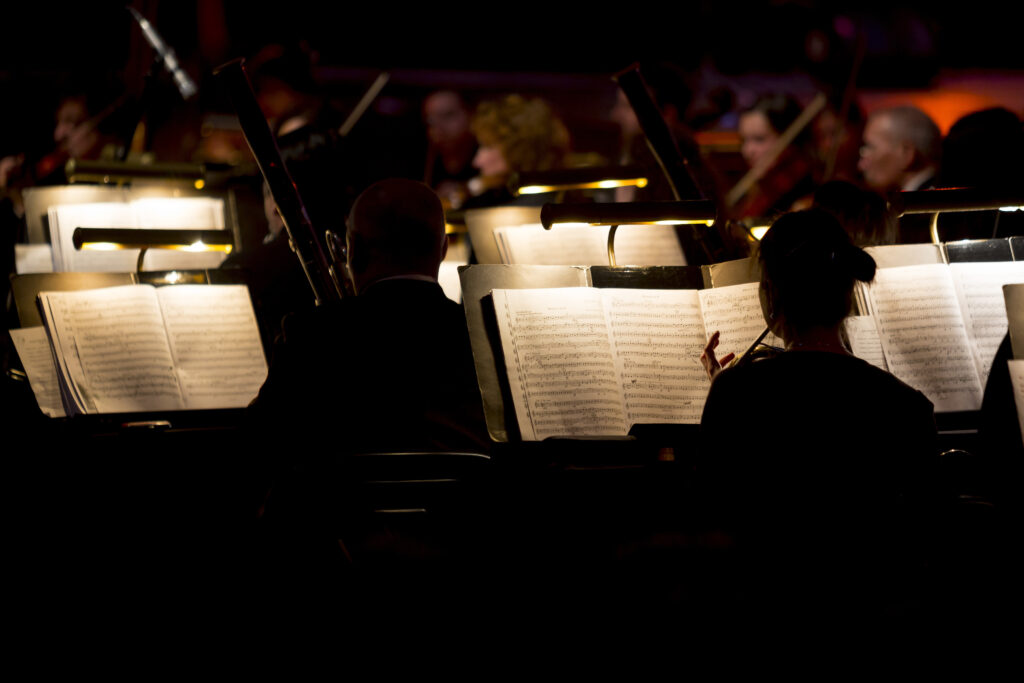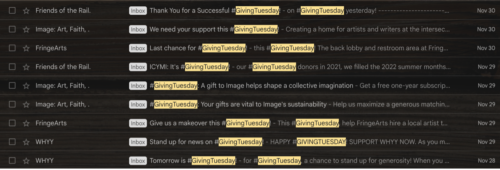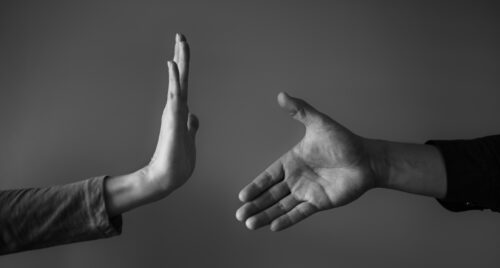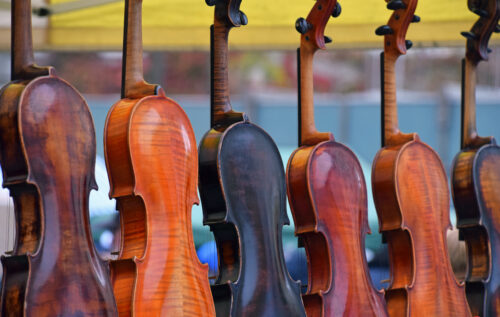In the wake of lockdowns and increased digital use and access, keeping orchestras funded and relevant will be no small task. They need to engage donors and make the experience excellent.
Henry Peyrebrune has been a bassist in The Cleveland Orchestra for 24 years, where he also volunteers as a gift officer. For the past 12 years, he has been board chair of NoteWorthy Federal Credit Union – a small credit union that provides musical instrument loans to professional and pre-professional musicians around the country.
In the first half of our conversation, Henry shared how Noteworthy Federal Credit Union protects the interests of musicians and offers unique services that big banks simply can’t provide. In the second half of that conversation, below, we discuss the intersection of performance and development and how Noteworthy was able to support its members in a unique way during COVID.
I loved the article you wrote for the Future Symphony Institute about how you got into development. I think if the people on the ground in many organizations were interested in making personal connections with major donors it would be beneficial for everybody. Do you see any similarities between your development work and your musical life?
They are certainly interrelated, because the development work makes the music possible. When I’m playing, whether in the orchestra or as a soloist, I’m trying to give a really convincing performance of the piece and to understand it, to make it my own, and to present it with real energy and sincerity so that the listeners will get to experience what I love about that piece. Working as a fundraiser, working one-on-one with a major donor, you have to do a similar thing.
I don’t know how you could be a generic fundraiser—“Just tell me what the cause is and I’ll go raise money”—I don’t understand how you could be a convincing advocate if you didn’t really love what you were doing. So you have to really know your organization inside and out, understand the mission and the immediate goals and strategy of the senior leadership, and agree with it enough that you can be a sincere and affecting and convincing advocate with your donors and make them feel like they want to be a part of it too.
You’re really bringing someone into the life of an organization when you ask for money. You’re enabling people to be a part of an organization they love through their gift. It’s a very elevated thing to do, but a lot of people don’t see it that way.
I think that’s true and that’s been my experience. I feel like I’ve done it successfully when the donors begin coming up with ideas for supporting things. Of course, there are always donors who want to run the organization but the ones who say, “I’ve been thinking about how I can help out. I’d like to give this much. Would this part of the organization be a good thing to support?” At that point I know they do feel they have an influence and it’s important and meaningful to them to be a part of it through their giving.
There’s this phenomenon where people will save documentaries to their Netflix queue because they think of themselves as the type of person who watches documentaries, but they never actually watch them. Is there something similar in orchestral giving—people who give because they want to think of themselves as benefactors of the arts? Or are donors actually filling the auditorium, too?
There is some of that, it’s a very prestigious board to join, so that carries some weight. But far and away most generosity comes from people who love the music and love going to the orchestra. They are subscribers, they come to extra concerts, they just want to be a part of all of it. It’s a small group but they provide a vastly disproportionate percentage of revenue. They are diehard advocates.
One thing you mentioned is that there are a couple of questions people often ask when they become a donor along the lines of, “Is Classical music going to survive?” How do you respond?
I think that a lot performing arts institutions were built around the subscription model. A group of patrons will buy tickets for the season and commit up to two years in advance for their Saturday nights and that’s the lifeblood of the institution’s earned and contributed revenue. I think people are less likely to make such a specific commitment now. We see subscriptions continuing to get shorter. There’s a lot of interest in flexibility. It’s more like, “I’m going to go to six concerts, but I can’t tell you which six.”
The business model is changing because people’s lifestyles are changing so we have to adapt to that, but I the interest in the arts is still really large. We have some competition from electronic media—Netflix and HBO and Amazon Prime and all of these. It’s so much better than TV was. Back in the day when people would commit to symphony orchestra concerts every Saturday night for 26 weeks, the competition was three channels and Chinese food was exotic and there was only one restaurant in your town. Now there are so many opportunities for live performances – theaters, touring Broadway shows, plus fantastic electronic media.
Right, now you have Mozart in the Jungle…
Yeah, Mozart in the Jungle, of course. You know I haven’t seen that. I read the book. But Blair Tindall is my age, all those people are my friends. I was in Boston, and they were in New York, but I know everybody. I don’t need to see it, I lived it.
Anyway, I think it’s a great time for the arts, but the way we deliver it and the business model have changed a lot.
Will some of the solutions that came about in the last year will be permanent in some way?
I think it has accelerated peoples’ online presence. Things that we thought “at some point in the future we’ll need to be able to do that”—all of a sudden, you need to do it now. It doesn’t seem to have happened differently if you’re a large or small organization. Everyone seems to have made that transition really quickly. So, I think that is really going to make a difference in the way people relate to their patrons and their audience. Going to a live concert will be a greater relief because everyone is so used to interacting with the world through their computer, but people will expect a higher degree of offerings and communication and the full use of electronic media from every organization they’re involved with. That’s new, and I think that will stick around.
Fast forward to a time when everything is fully open again. If I’m sitting down in front of my computer in the middle of Indiana, I could look up my local symphony. But I could also look up the Boston Symphony Orchestra or the Berlin Philharmonic. Will that have any long-term effect on the local orchestra landscape?
I think it must, but I can’t say exactly what it will be. The program we’re getting ready for this week to broadcast on our streaming platform is a piece I’ve never played before. I got the assignment and the music and the first thing I did was go to the New York Philharmonic and watch their performance of the same piece. That’s what’s amazing about the access we have. I think that people will expect to have access to all the best arts organizations and performances. They can watch stuff from the Royal Shakespeare. You have to distinguish your live performances—it has to be so much better than what you can get on your screen.
It is just by virtue of the aural experience, right?
It is, but the whole experience has to be better. Parking can’t suck anymore. All of those things have to be great. We’ve raised the standard for what you can expect online and it’s going to force live performances to compete.
Aside from the physical accident of being in Cleveland, is there something that makes The Cleveland Orchestra distinct from the Philadelphia Orchestra or any other orchestra?
There are two things. One is that The Cleveland Orchestra really does play like a chamber ensemble. It’s had that reputation for years. It’s not just the art, everyone is constantly referring to the people around them, you can hear everything, and everyone is responsive. It takes about two people to ruin that dynamic in an orchestra and it’s been ruined in nearly every orchestra. Just two people saying, “I know how this goes, I’m really going to lay it down,” or “That person’s impossible to play with so I’m going to play it my way and they’ll have to come to me.” If two people do that, everyone else can no longer listen and play.
So, the chamber approach to music-making sets The Cleveland Orchestra apart. It’s the easiest orchestra I’ve played with because all you have to do is do what you’re supposed to. As long as you listen and respond, you have somebody to match for ensemble and intonation and you don’t get that ambiguous foggy sound. It’s remarkable that way.
The other thing is that the community here identifies with the orchestra in a way I don’t think I’ve seen anywhere else. The per capita fundraising in Cleveland is just extraordinary. It’s a really generous community and people recognize that for a small city we have some fantastic organizations – the art museum and the orchestra principally among them—and it’s our responsibility to take care of them. They really have a sense of ownership. It’s a phenomenal place to live.







1 thought on “Keeping orchestras solvent today: an interview with Henry Peyrebrune, part two”